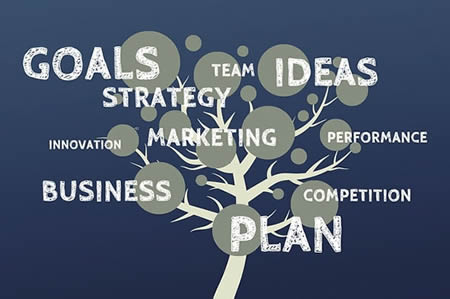
Business Goals for 2024
As any business owner knows, your commitment to growth, innovation, and excellence is of utmost importance if you want to stay in business.
Financial Objectives
Finances are super important if you want to keep your business afloat. Outline specific financial goals for the year. This could include revenue targets, profit margins, or cost reduction strategies. Be realistic and measurable in your approach.
Expansion
Do you want to grow? If so, a detailed plan for expanding your market reach should be at the forefront of your growth approach. This may involve entering new geographic regions, targeting a different demographic, or introducing products/services to a broader audience.
Product/Service Development
What might be your improvement plan for your existing products or services? Highlight any new offerings you intend to launch during the year.
Customer Experience Enhancement
Customers are everything! How can you enhance the overall customer experience? This may involve improving customer support, implementing feedback systems, or introducing loyalty programs.
Technology Integration
Your digital presence is incredibly important. We are not saying this just because this is what Grateful Web Services focus is. Being visible online is many times the first impression that your company has. Your business should look professional and sharp. Even if you aren’t online that often, your potential customers are. In addition, explore how you can leverage emerging technologies to streamline operations, improve efficiency, or enhance the customer experience. Consider investments in automation, artificial intelligence, or other relevant technologies.
Sustainability Initiatives
Depending on your business, what is your commitment to sustainability and environmental responsibility? What specific initiatives could you implement? Reducing your carbon footprint, implementing eco-friendly practices, or supporting green causes? This is important to consider with how things are going with our planet.
Employee Development and Well-being
If you have employees, treat them well! They are the heartbeat of your company. Happy employees work harder and are more invested in your business. A happy employee will stay and ensure that you don’t have a revolving door. What is in place for your employee development and well-being? This could involve training programs, mentorship initiatives, or improvements to work-life balance. Being valued, appreciated, and heard can go a long way.
Community Engagement
Express your commitment to community involvement. Outline plans for charitable activities, volunteer programs, or partnerships with local organizations. This one can be tough, especially as a sole proprietor but do your best to commit to something this year.
Marketing and Branding
If you have a team, discuss your marketing strategies for the year, including campaigns, social media initiatives, and branding efforts. Consider how you will strengthen your brand presence in the market.
Stay engaged with your business goals this year. This can be hard to do at times with your clients taking center stage but being thoughtful about this throughout the year, can help grow your business.
Give us a call at 916-917-5604 or email us if you want to up your digital game!
Linkedin had an interesting article on Web innovations for 2024. Read the article here











